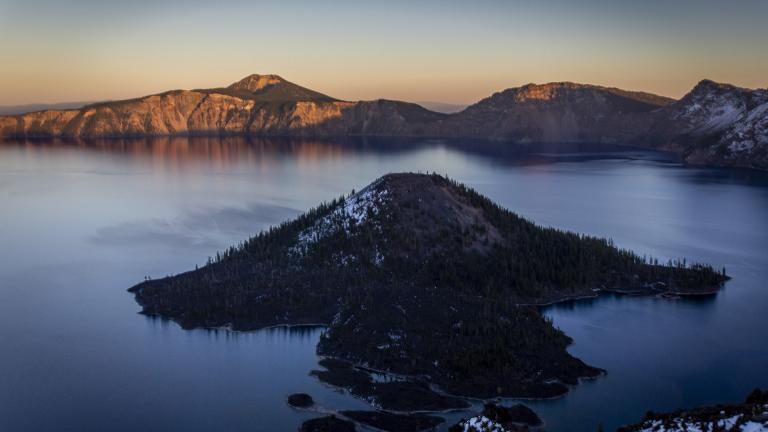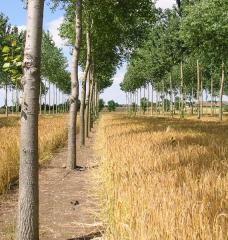
This story by ESI Journalism Fellow Alex Schwartz was originally published as part of the Project Klamath interactive website by the Herald & News, where it appears with additional photos and resources.
___________
Giiwas has endured continuous change. It began its life as a massive mountain frosted with glaciers, until a volcanic battle turned it into a barren chasm.
Now it sports a mosaic of ancient conifers, open meadows and kaleidoscopic cliffs cradling a vast cobalt lake — Crater Lake, as most call it today.
Standing on the rim of the caldera, it’s hard not to think about the millions of years of geologic luck that led to this place.
Tectonic plates beneath North America and the Pacific Ocean collided at just the right angle to force magma through the Earth’s crust, providing the molten fuel to create a vast volcanic plateau. Gently sloping shield volcanoes formed on top of it, followed by the snow capped cones of the High Cascades a few hundred thousand years ago. Glaciers, some a thousand feet thick, carved deep canyons into the mountain’s slopes as recently as 10,000 years ago.
Fire took over again roughly 7,700 years ago, when a cataclysmic eruption (or, as the Klamath story says, a battle between two powerful spirits) collapsed Mt. Mazama’s summit, spewing gas, pumice and ash hundreds of miles and obliterating the lush forests that surrounded the mountain.
Water allowed life to return to the hollowed volcano. No longer a mountain, Mt. Mazama became a 7,000-foot rain bucket, trapping precipitation blown in from the Pacific Ocean. Storms brought rain and snow to the nutrient rich volcanic soils. Over thousands of years, the caldera filled with water and became a tranquil, sapphire pool fringed by verdant trees. Various Indigenous groups in the area who had witnessed the eruption, including the Klamath and Modoc, began to consider the lake a deeply spiritual place.
In 1902, the land became one of the United States’ first national parks, largely shielding it from development.
But Crater Lake National Park, as beautiful and protected as it is today, is not immune to a warming atmosphere. Neither is the 16,000-square-mile Klamath Basin, upon which the flooded caldera sits like a crown jewel.
The weather station at the park’s headquarters has shown a rise in average temperature of about 1˚F since the mid-20th Century. That may not seem like much, but it’s already having a measurable effect on the park’s ecosystems.






